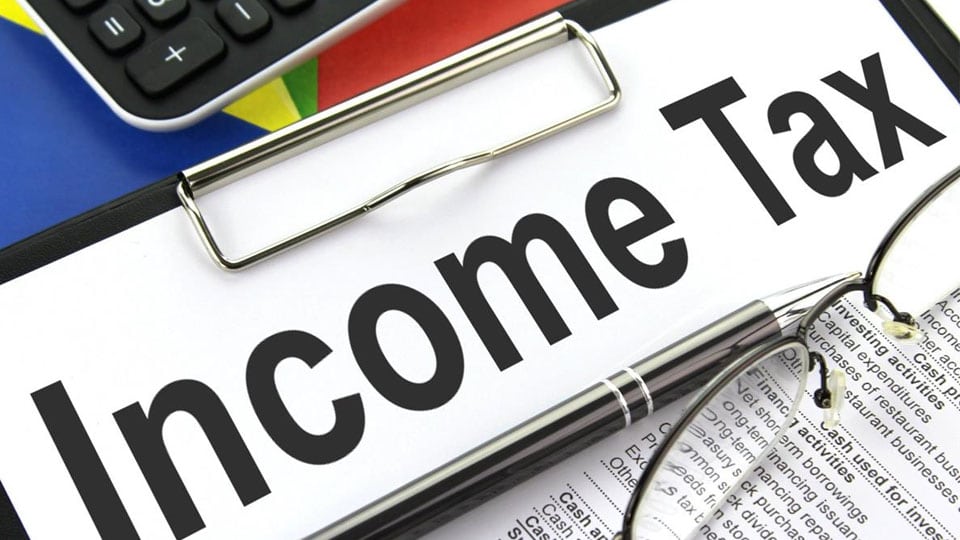In 1961, India got itself a shiny new playbook for taxes, commonly known as – the Income Tax Act of 1961. This playbook acts like the superhero of the tax world, governing everything from how taxes are imposed, managed, and collected in India. Since then, this law has undergone numerous modifications to adapt to the shifting economic environment and changing tax policies.
Hence, let’s take a joyride through the wild world of the Income Tax Act of 1961!
What is the Income Tax Act 1961?
Income tax, governed by the Income Tax Act of 1961, is a tax on the annual earnings of individuals or businesses. This framework outlines procedures for tax computation, assessment, and collection in India. Taxpayers are required to submit Income Tax Returns (ITR) annually, disclosing income and potential refunds. Returns can be filed online or offline via official or authorised platforms. The system offers deductions and exemptions to alleviate tax liabilities for a fiscal year.
Key Features of the Income Tax Act 1961
These are the primary features of the Income Tax Act 1961:
· Income tax is a direct tax that taxpayers must bear and cannot transfer to others.
· The Central Government of India oversees this taxation.
· It applies to income earned by taxpayers in the preceding year.
· Tax calculations are based on the taxpayer’s income tax slab.
· The government imposes a progressive income tax rate, ensuring higher taxes for wealthy individuals.
· Deductions are subject to maximum limits per financial year in specific cases.
Deductions Available Under the Income Tax Act 1961
The Income Tax Act of 1961 provides taxpayers with opportunities to reduce their taxable income through various deductions outlined in the following sections:
| Section 80C: | Taxpayers can claim a deduction of up to Rs. 1.5 lakhs under sections 80C, 80CCC, and 80CCD for certain types of investments. |
| Section 80D: | This section allows taxpayers to deduct up to Rs. 25,000 (Rs. 50,000 for senior citizens) for health insurance premiums paid for family members. |
| Section 80CCD: | Individuals can claim a deduction for contributions made to the Atal Pension Yojana (APY) or New Pension Scheme (NPS). |
| Section 80DD: | Taxpayers can deduct medical expenses for themselves or their HUF dependents with disabilities. |
| Section 80TTA: | This section permits a deduction of Rs. 10,000 on interest earned from savings bank accounts for individuals and HUFs. |
| Sections 80DDB: | Deductions can be claimed for medical expenses incurred on specified illnesses. |
| Section 80U: | Individuals with physical or mental disabilities or impairments can claim deductions under this section. |
| Section 80G: | Taxpayers can avail of deductions on donations made to charitable institutions, ranging from 50% to 100%, depending on the nature of the institution and the donation. |
| Section 80E: | Deductions are allowed for interest paid on education loans taken for higher education purposes. |
An Overview of Chapters within the Income Tax Act 1961
The following are the main sections of the Income Tax Act 1961, which outline different rules and the implementation of income tax provisions.
| Chapter | Description |
| Chapter I | The initial chapter provides an introduction to the Income Tax Act, offering an overview of its provisions and objectives. |
| Chapter II | This chapter discusses the commencement and scope of the Income Tax Act. |
| Chapter III | This chapter primarily addresses various aspects such as income tax charges, computation of total income, dividend income, and income from foreign employment, among other related matters. |
| Chapter IV | This chapter encompasses all income sources not included in total income, including income from trusts, institutions, and political parties. |
| Chapter V | This chapter focuses on individual income, covering earnings from sources like capital gains and properties. |
| Chapter VI | This chapter covers income transfer concepts, including transfer and revocable transfer scenarios. |
| Chapter VII | The seventh chapter discusses deductions applicable to specific payments and income types. |
| Chapter VIII | This chapter pertains to discounts and shares held by association or organisation members. |
| Chapter IX | This chapter addresses matters related to double taxation relief, income tax rebates, and relief. |
| Chapter X | This chapter deals with provisions enabling individuals or entities to mitigate income tax liabilities, including tax treaties and arrangements with foreign countries. |
| Chapter XA | This chapter compiles anti-avoidance rules related to income tax. |
| Chapter XII | This chapter involves tax calculations for unique or special cases. |
| Chapter XIIA | Non-resident Indians are subject to special income provisions, covered in sections 110 to 115BBE. |
| Chapter XIIB | This chapter contains special tax provisions for specific types of companies, from sections 115J to 115JF. |
| Chapter XIIBB | This chapter outlines taxation procedures when a foreign company converts into an Indian subsidiary. |
| Chapter XIID | This chapter exclusively discusses taxation of profits earned by domestic companies. |
| Chapter XIIDA | This chapter highlights the taxation of distributed company income. |
| Chapter XIIE | This chapter discusses taxation related to income distribution to unitholders. |
| Chapter XIIF | This chapter addresses the taxation of income from venture capital funds or companies. |
| Chapter XIIG | This chapter provides provisions governing the taxation of shipping companies. |
| Chapter XIII | This chapter provides an overview of income tax authorities and their powers. |
| Chapter XIV | This chapter comprehensively covers aspects related to tax return filing, from sections 139 to 152. |
| Chapter XIVA | This chapter aims to prevent redundant appeals, especially those pending in higher courts. |
| Chapter XV | This chapter outlines provisions for tax recovery from private companies, non-resident Indians, etc. |
| Chapter XVI | This chapter deals with taxation and assessment procedures for firms. |
| Chapter XVII | This chapter includes provisions for tax collection, recovery, and interest on overdue payments. |
| Chapter XVIII | This section covers income tax relief for companies distributing dividends and engaging in charitable activities. |
| Chapter XIX | This chapter addresses the process of obtaining tax refunds. |
| Chapter XIXA | This section includes provisions related to settlements, application procedures, etc. |
| Chapter XIXB | This chapter discusses advanced rulings and related matters. |
| Chapter XX | This chapter covers appeals directed toward various authorities and courts. |
| Chapter XXA | This chapter focuses on real estate acquisition to counter tax evasion. |
| Chapter XXB | This chapter lists payment methods for rectifying tax evasion cases. |
| Chapter XXC | This chapter addresses central government property acquisitions. |
| Chapter XXI | This chapter outlines penalties for tax non-compliance, from sections 271 to 275. |
| Chapter XXII | This chapter discusses prosecution and offences related to non-compliance, from sections 275A to 280D. |
| Chapter XXIII | This chapter covers miscellaneous topics not addressed in preceding chapters, from sections 281 to 298. |
*For more detailed information regarding each chapter, you can access the official website of the Income Tax Department of India.
Conclusion
In a nutshell, being governed by the Central Government, the Act mandates income tax imposition, management, and collection, with key features including progressive tax rates and limited deductions. Lastly, it is important to remember that this Act undergoes frequent modifications, hence it’s best to keep an eye out for possible future changes.








Recent Comments